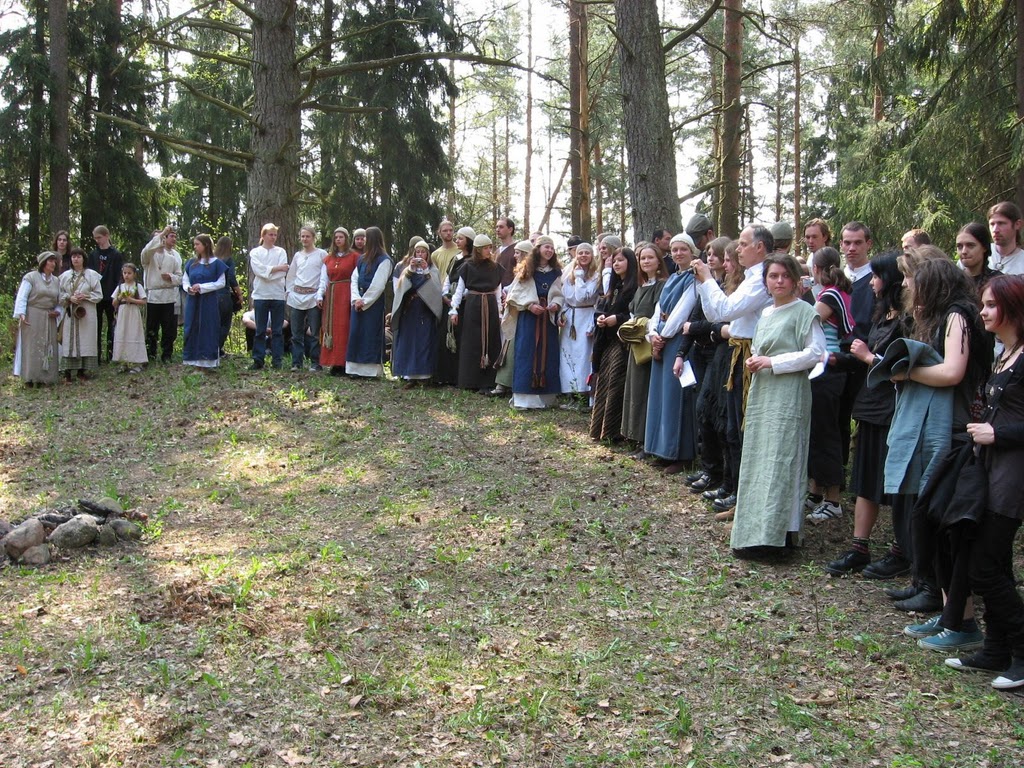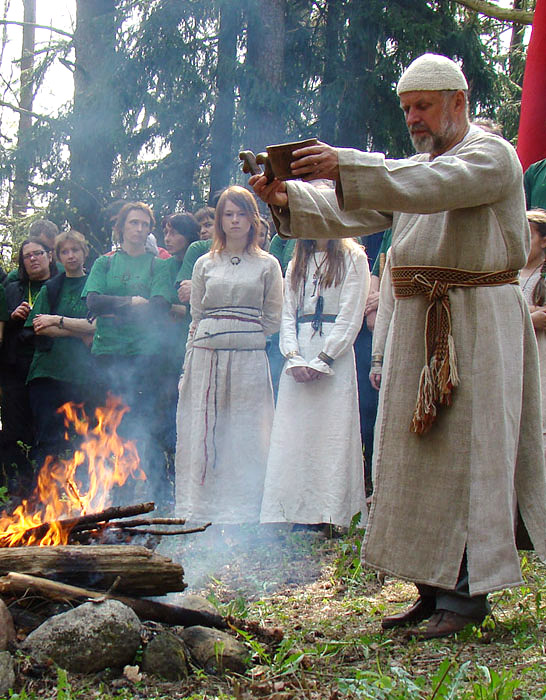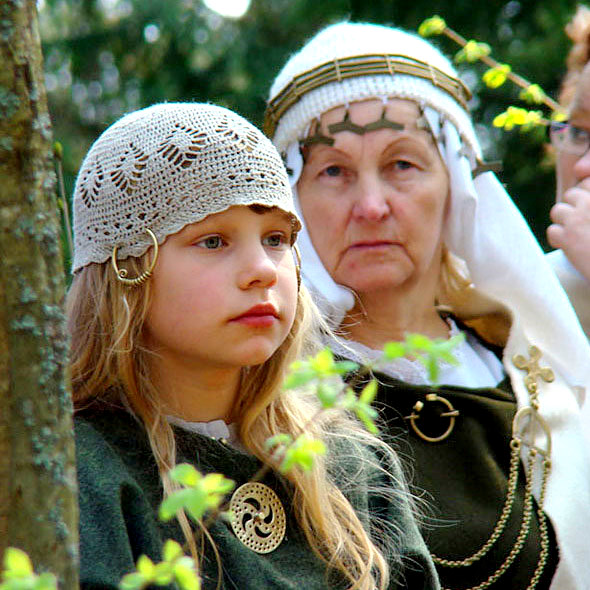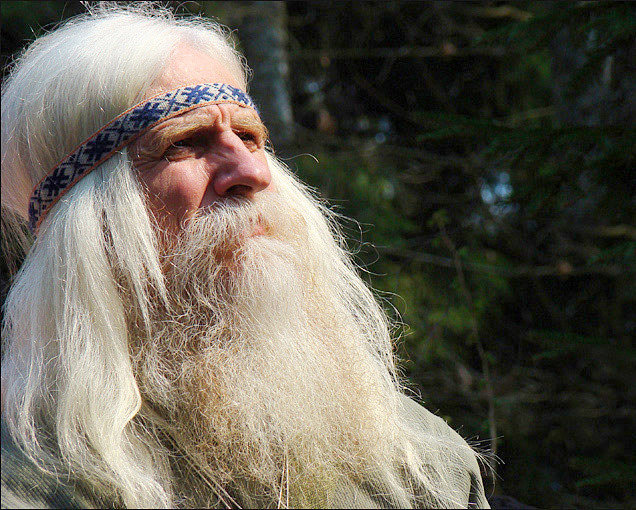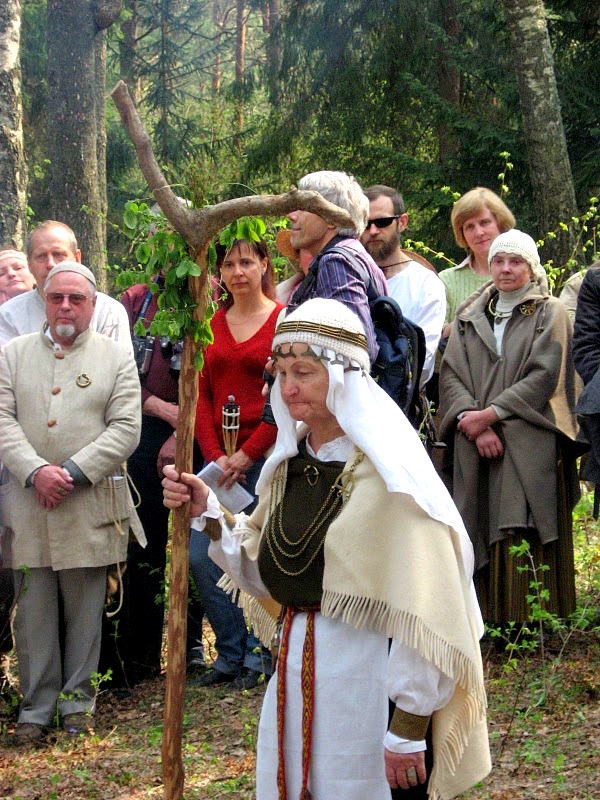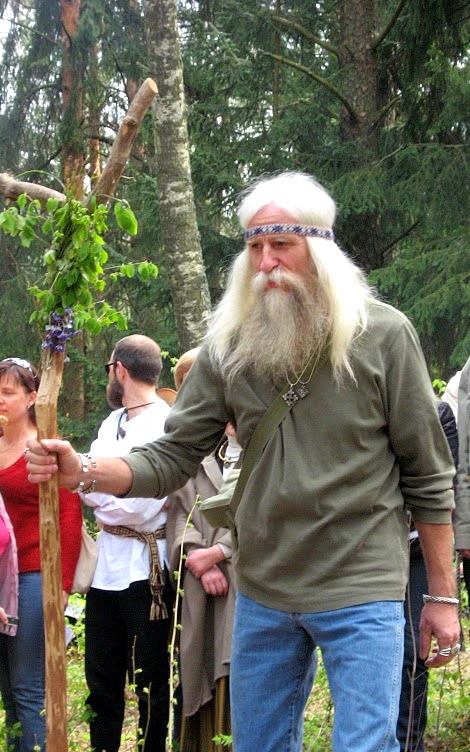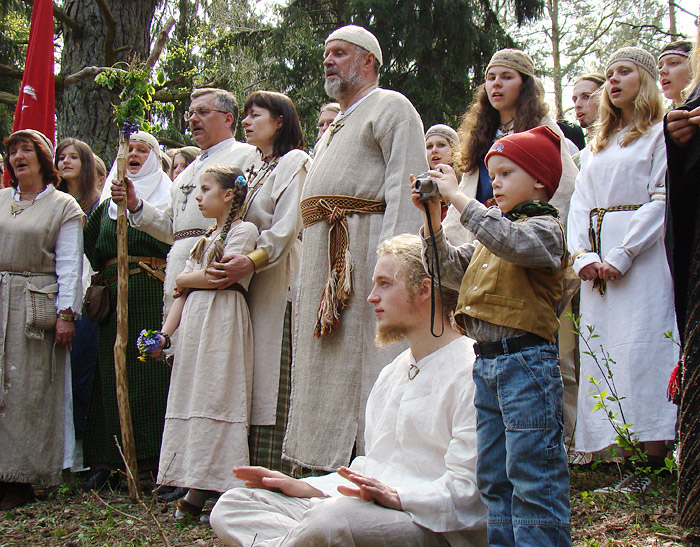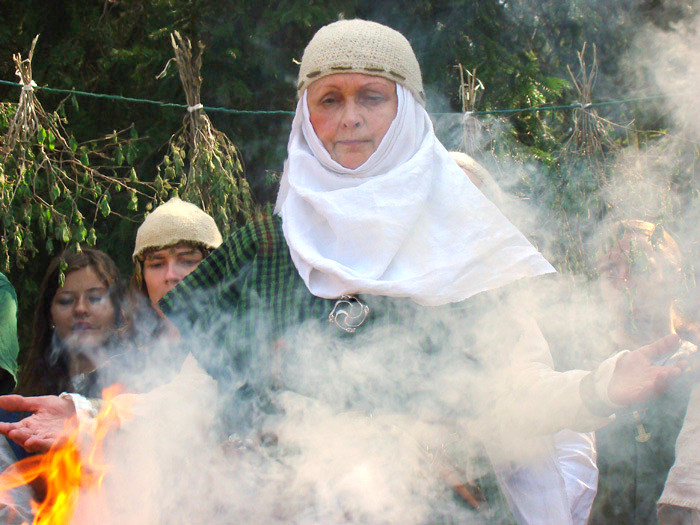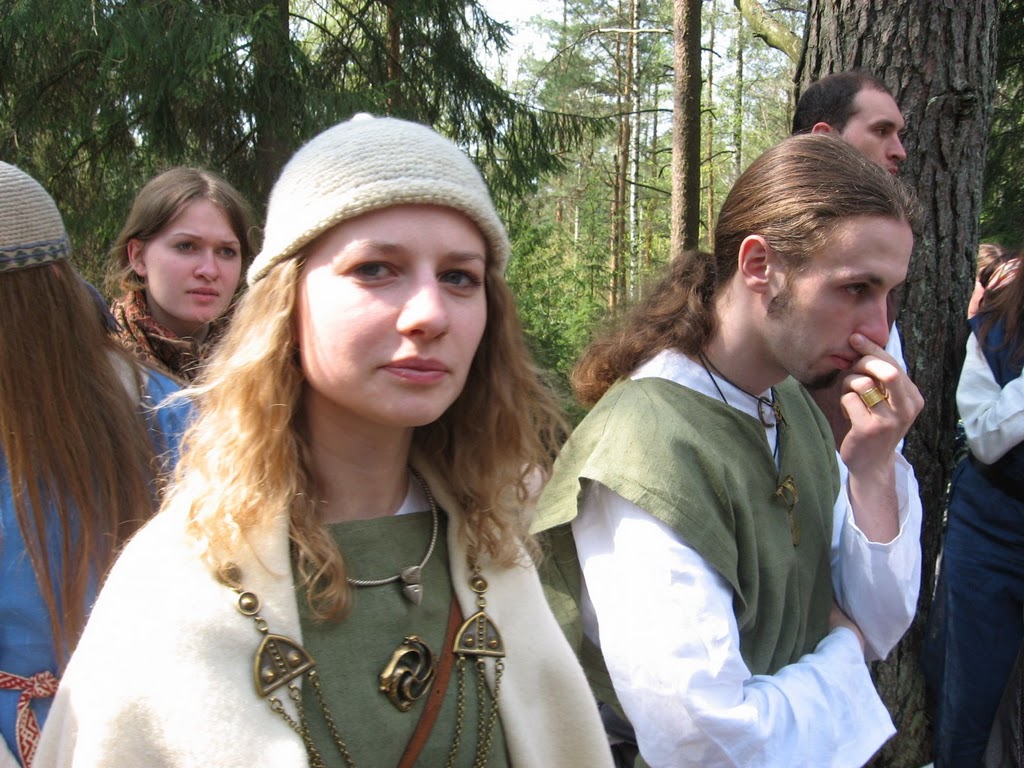Korzystam z okazji, że Marta Czasnojc przesłała nam zdjęcia z Jore Svente z Litwy, z obchodów tegorocznych oraz nadesłała link do strony rodzimej wiary litewskiej Kościoła Świętej Ziemi, który to święto zorganizował:
http://www.thechurchofthedivineearth.org/about.html
Korzystam żeby przypomnieć, że w październiku 2010 zamieściliśmy materiał o Jore Svente i o Romuvie oraz o przepięknej ziemi Neregeta.
Teraz ten materiał znalazł się w dziale STRONY: pod szyldem Wiara Przyrody gdzie indziej na Świecie – jest tam ponieważ tuż pod nim znajdują się inne opisy Świątyń Światła Świata, a też i dlatego, że mimo iż Istowie – Bałtowie byli od tysięcy lat rdzennymi mieszkańcami prastarego Królestwa SIS (Słowian, Istów i Skołotów-Scytów) to chcemy ich specjalnie w uznaniu zasług dla przechowania wiary przyrodzonej wyróżnić i wyrazić tym szacunek dla ich etnicznej odrębności.
Pamiętajmy, że ponieśli ciężkie straty walcząc o zachowanie wiary : Wymordowano zupełnie Prusów (Brusów) i Jaćwież (Jąćwięgów-Jąt-Wenedów) – tak samo jak uczyniono to z Wieletami, Drzewianami Połabskimi, Obodrzycami i prawie że skutecznie do końca z Serbami połabskimi (Łużyczanami), czy z Dorzyńcami na południu i zachodzie Europy (Szwajcaria, Grecja) oraz Rakoszanami (Austria).
Ze strony Kościoła Świętej Ziemi – wypis obchodzonych przez nich litewskich świąt
![]()
This page is a summary of four main festivities of the year
in addition to four intermediate cross-quarter assemblies
|
Festivals of the year To celebrate seasonal cycles whereby the processes of Nature –birth, life, decline and death– can be solemnly cherished and remembered and to relate to Nature within the perimeters of personification of Her powers; to celebrate the four primary points of the year that identify the four seasons of Nature: Spring, Summer, Autumn and Winter. |
|
|
|
Spring Equinox (c. March 21st) The Spring Equinox is an enchanted borderland of time outside of time where light and dark are joined. The light and warmth of the sun begins to overtake the darkness of winter until the sun will peak at Summer Solstice in June. This is a time of new fire. The light and dark are in harmony but the light is growing with new energy. It is a season of fertility and growth. Spring has arrived and the day and night are balanced. In Wicca, Ostara is the vernal equinox, when the God and Goddess walk the fields, causing the animals to reproduce. Some traditions view this as a time of courtship between the God and Goddess. Ostara is the Goddess of fertility and rebirth, but also of enchantment, innocence and dawn. The Earth continues on its path, and our north pole starts moving towards the Sun again. The Sun moves upwards in our skies and the days continue getting longer. Again, we reach a midpoint when day and night are of equal length. This is called the ‘vernal (or Spring) Equinox. This festival is often characterized by the rejoining of the Mother Goddess and her lover-consort who spent the winter months in death. Other variations include the young God regaining strength in his youth after being born at Yule, and the Goddess returning to her Maiden aspect. Velykos (Easter) Christianity incorporated Lithuanian Equinox traditions into Easter and replaced the ancient Lithuanian name for the Equinox with the Slavic word ‘Velykos’, i.e. Easter. ‘Pavasario lyge’, meaning Spring Equinox, remains the only non-Christian name for the holiday. The week before Equinox, called the Velykos of Veles (souls), concludes the annual cycle of commemorations of the dead. As during Kucios (Winter Solstice Eve), families remember their dead and leave their dinners on the tables overnight for the veles to eat. Summer Solstice (c. June 22nd) Summer Solstice is the year’s longest day and the zenith of the Sun’s power. It is a sign of fertility and increasing life. At Midsummer, the Mother Goddess is heavily pregnant and the God is at the peak of his manhood. The day the north pole is nearest the Sun is called the ‘summer solstice’. Looking from Earth, the Sun reaches its highest point in the sky all year and this day is the longest day of the year. It is the start of summer and after this date the days start getting shorter. Rasa A representation, astronomically, of the circling of the planets around the sun. In Rasa it is seen the connection of celestial bodies following their given path often with the accompaniment of natural sounds or music. Rasa signifies stately, quiet and continuous movement of the bodies of those participating around another in the center, the sun, while those moving about the center, in various orbits or circles, represent the planets. Such dances are representative of life in nature moving in circular or spiral ways. Not unusual is the greeting of the setting sun, lighting fires and the making of offerings, visiting and blessing fields and trees, casting of wreaths, greeting the moon and the stars and paying homage to the rising sun. Autumn Equinox (c. September 21st) Autumn Equinox is a celebration of day and night being of equal length, looking forward to the shortening of days, thanksgiving and the second harvest. Day and night are of equal length, looking forward to the shortening of days. In Wicca, Autumn Equinox is the time of the descent of the Goddess into the Underworld and a farewell bid to the Harvest Lord. As we continue our journey around the Sun, the north pole moves away from the Sun and the Sun rises lower in the sky so the days continue getting shorter. When the Sun is at its mid-point in the sky, we reach the Autumn Equinox: day and night are of equal length and it’s the beginning of autumn. The holiday of Autumn Equinox is a ritual of thanksgiving for the fruits of the Earth and a recognition of the need to share them to secure the blessings of the Goddess and God during the winter months. Velines The day for celebrating the dead. During the month of October, it is a time for remembrance of the dead. When work was done and harvesting was complete, special rituals honoring the souls of ancestors took place. Ritual traditions of the dead were directly related to peoples’ belief that on that day, the souls of the dead return to earth and to their homes for the rest of the winter. These were graciously received and treated according to rituals of the ancestors in a most hospitable manner. It is not uncommon for people to gather in cemeteries to remember their dead and pay homage to them. They would be remembered for their valor, for their honesty and for their good habits. Afterwards, suppers of plenty were prepared and consumed. Actions relating to going out into the fields to encourage fertility of the land are not uncommon. Winter Solstice (c. December 22nd) Winter Solstice celebrates the increasing light after the longest night, the major festival of the year. Celebrated with feasting and fires, it is the longest night of the year when the Sun is farthest from the Earth. This is a time of rebirth, when candles are lit to welcome the Creator who is the returning Sun of the Winter Solstice. In Wicca, Yule is the time when the Goddess gives birth to the God. At this time, the Holly King (God of the waning year) is vanquished by the Oak King (God of the waxing year). At Yule, the two god-themes of death and rebirth coincide. This day is when the north pole is furthest from the Sun and is called the Winter Solstice. The Sun crosses the sky at its lowest point all year, crossing the sky in the quickest time and is therefore the shortest day of the year. Winter Solstice marks the start of winter, and from then on the days start getting longer. Yule is celebrated as the rebirth of the Great God who is viewed as the newborn Solstice Sun. Kučios/Kaledos Winter Solstice Eve – Beginning of the year marks the end of the year when the world returns to darkness and non-existence. However, as death begets birth, the two year-end holidays also herald the rebirth of Nature and the return of the Sun. Renewal of time and the beginning of the new year is linked with the return of the sun. In years past, the Moon calendar was used for time; with the development of agriculture, the Sun calendar took root. Additionally, there are four intermediate festivals which fall in between, sometimes called „cross-quarters,” on or near the first days of February, May, August, and November. These cross-quarter points mark key moments in the planting, growing and harvesting or crops. |
Na Litwie lada dzień będzie obchodzone Święto Kupały , kto ma blisko może pojechać.

